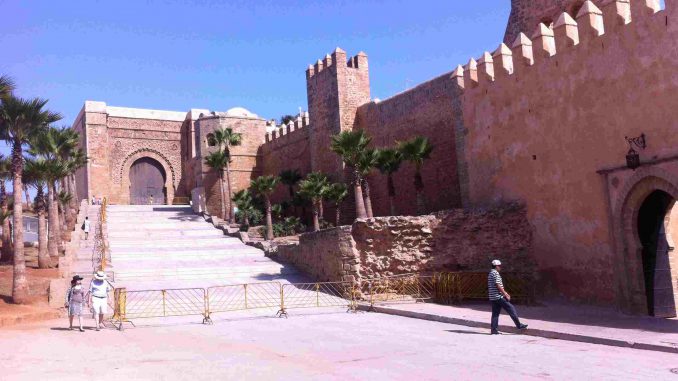
The Oudayas Kasbah is a fortified castle built by Youssuf ibn Tachfin under the Almorabits dynasty to counter enemy attacks before the construction of Rabat in 1140 under the reign of Prince Tachfine ibn Ali and which was named “Palais beni Tarka”. Rabat was also called “Mahdia”, when it was taken by the Almohads who named it after their spiritual leader Mehdi Ben Toumert.
Many historical sources indicate that the Kasbah was long neglected before being inhabited by the Moriscos expelled from Andalusia. Under the Alawids, it was given the name of the Oudayas in reference to a Sahrawi tribe that settled there and whose members had joined the army.
The Kasbah was founded in 1150 by the founder of the Almohad state, Sultan Abdelmoumen ibn Ali Al Goumi, to serve as a defending wall against attacks by pirates on the Moroccan coast and to house soldiers before transporting them to Andalusia. The Kasbah was also used as a prison for centuries before being restored at the beginning of the 20th century and used as a tourist site. It is considered to be one of the most important historical monuments in Rabat and the Kingdom of Morocco in general, and was inscribed on UNESCO’s World Heritage List on 20th of July 2006.
The Oudayas Kasbah is located in the center of Rabat. Built on a high cliff overlooking the Bouregregreg River, it is surrounded by a high wall called the Almohad wall, equipped with traditional powder guns that watched over enemy ships. It has a huge portal leading to the entrance to a residential area whose houses still retain their Arab-Andalusian character, which is reflected in the expanse of white and blue colors as well as in the small windows, balconies and narrow alleys. The Kasbah is home to a large mosque, historically known as the “old mosque”, the first mosque built in Rabat in 544 AH. It also contains large and spacious gardens designed in the Andalusian style and which the inhabitants of the Kasbah call “Riyads”. These gardens are decorated with trees, palm trees, roses, fountains and water basins, as well as a museum of crafts, jewelry, machinery and weapons dating back to the time of Moulay Ismail Alaoui.
The Oudaya, whose kasbah has been transformed into a plastic art gallery and nowadays hosts artistic and cultural activities, is a favorite place for many Moroccan, foreign artists and writers who have chosen to settle there.

Be the first to comment